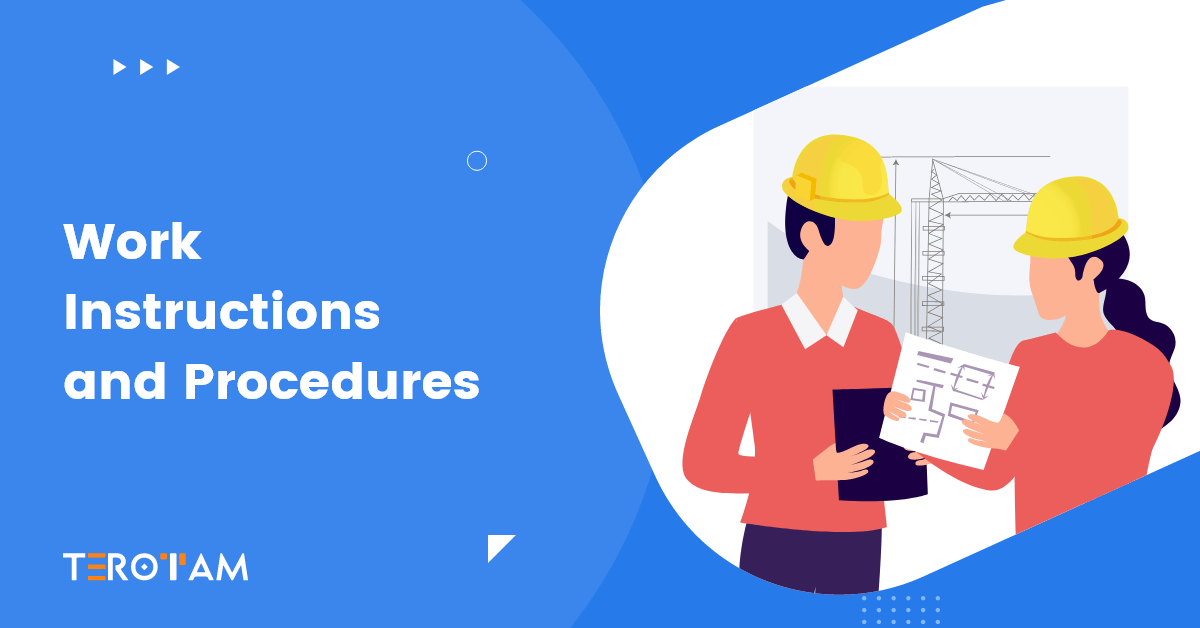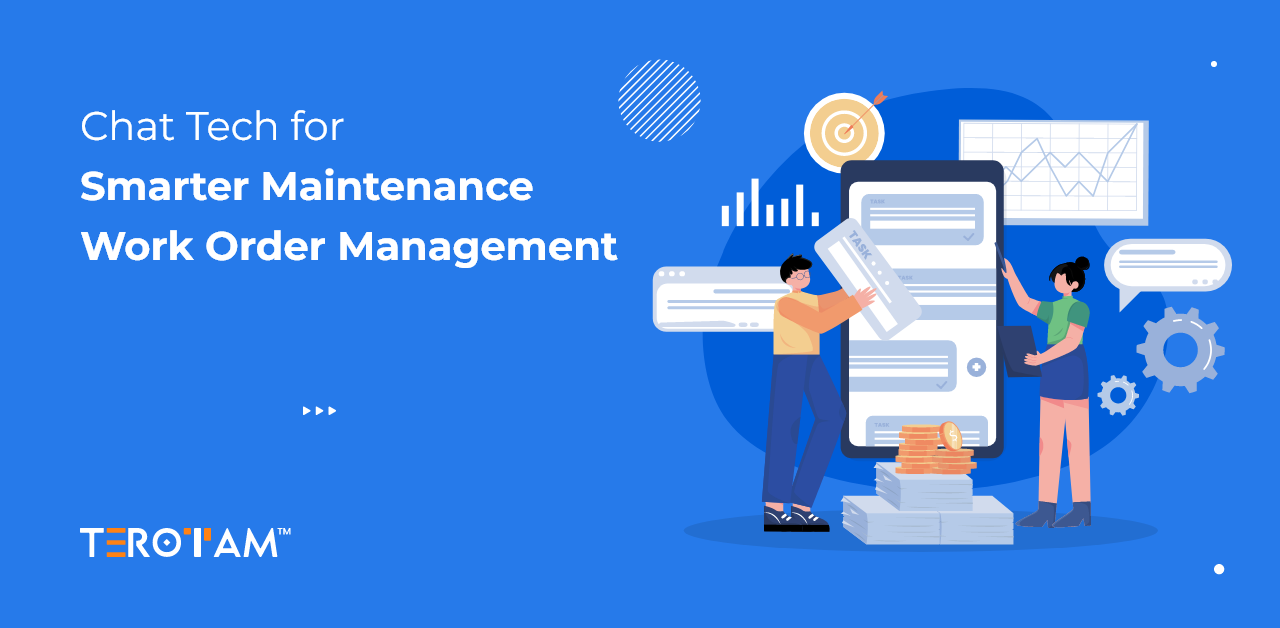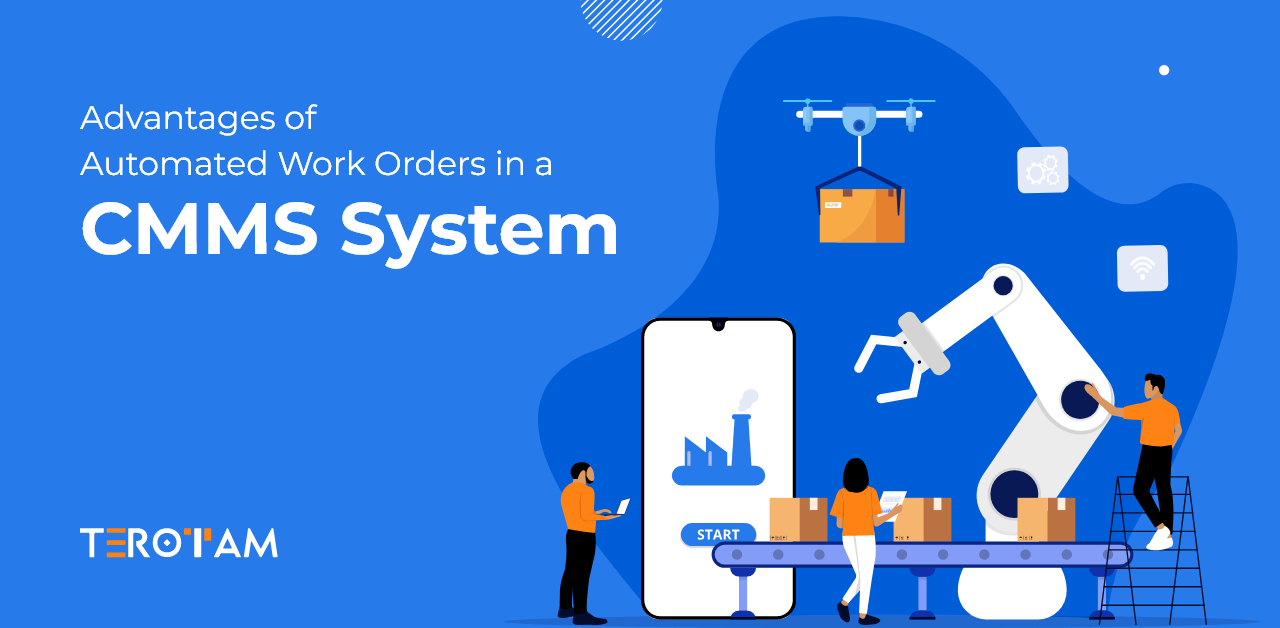Have you ever been fascinated by how a high-performance engine operates in perfect harmony with each component performing its function to the best of its ability? Like a finely tuned engine, businesses run smoothly when precise and efficient work instructions and procedures lead them. The accuracy of well-established guidelines is crucial for achieving operational excellence, regardless of whether you’re in charge of a manufacturing facility, a customer support center, or a financial project.
In this post, we’ll plunge into the world of work instructions and procedures to learn about their importance, the benefits they provide for businesses, tips to write effective work instructions and procedures, and the revolutionary nature of modern technology.
So, Let’s begin with understanding the work instructions and procedures.
What are Work Instructions and Procedures?
Work instructions and procedures are documents that provide detailed guidelines for performing specific tasks, processes, or activities within an organization. These documents ensure that tasks are executed consistently and accurately, regardless of the person performing them.
Work instructions provide step-by-step directions for completing a task, while procedures outline the broader process in which the task is embedded. These documents are essential for maintaining consistency, quality, and efficiency in operations.
Why Work Instructions are Important?
Work instructions are pivotal in standardizing operations and ensuring that tasks are carried out consistently across an organization. They are crucial in industries where precision and accuracy are vital, such as manufacturing, healthcare, and aerospace.
Here are some key reasons why work instructions are important:
- Consistency: Work instructions ensure that tasks are performed uniformly by all employees, minimizing variations that can lead to errors or inconsistencies.
- Training and Onboarding: New employees can quickly learn to perform tasks correctly by referring to well-documented work instructions. This reduces the learning curve and accelerates the onboarding process.
- Quality Control: Clear instructions help maintain high-quality standards by guiding employees through the correct sequence of steps and best practices.
- Safety: Work instructions provide crucial information on safety protocols and precautions in industries with potential safety risks.
- Compliance: Work instructions can help organizations adhere to regulatory requirements and industry standards by documenting processes that meet specific criteria.
How to Write Procedures and Work Instructions?
1. Understand the Purpose and Audience
Before you start writing, it’s crucial to understand the purpose of the work instructions and procedures. These documents are step-by-step guides to completing specific tasks, processes, or activities. They are meant to be clear, concise, and easy to follow.
Identify the audience who will be using these documents – are they new employees, experienced staff, or a mix of both?
Tailoring your writing style and level of detail to the audience is essential for effective communication.
2. Identify the Process or Task
Begin by clearly identifying the process or task you want to document. Break down the larger process into smaller steps. If it’s a complex process, consider creating a flowchart or diagram to visualize the sequence of steps. This will help you ensure that you don’t miss any critical steps and that the document is well-organized.
3. Use Clear and Simple Language
One of the fundamental principles of writing work instructions and procedures is to use clear and simple language. Avoid technical jargon or overly complex vocabulary that might confuse the reader. Write straightforwardly, using short sentences and action-oriented verbs. The goal is to ensure that anyone reading the document can easily understand and follow the instructions.
4. Start with a Clear Title and Introduction
Begin your work instructions and procedures with a well-defined title and a concise introduction to provide context and purpose. Follow these steps for an effective start:
- Title Clarity: Craft a descriptive title immediately conveying the task or process.
- Contextual Introduction: Write a brief introduction outlining the task’s importance and relevance.
By beginning with a clear title and introduction, you engage readers and set the stage to understand the subsequent instructions better.
5. Break Down the Steps
The core of your work instructions and procedures lies in breaking down the process or task into individual steps. Each step should be written as a standalone instruction and should include the following elements:
- Step Number or Title: Clearly label each step with a unique identifier or title for easy reference.
- Description: Describe the action to be taken in this step. Use active verbs to convey what needs to be done clearly.
- Conditions or Prerequisites: Specify any conditions or prerequisites that need to be met before starting the step. This could include materials, tools, or certain settings.
- Warnings or Cautions: If any potential hazards or risks are associated with the step, clearly outline them in this section. Safety should always be a priority.
- Tips or Best Practices: Provide additional tips or best practices to help the reader perform the step more effectively or efficiently.
6. Use Visual Aids
Visual aids are powerful tools that enhance the clarity of work instructions and procedures. They visually represent processes, making complex tasks easier to understand. Follow these steps to incorporate visual aids effectively:
- Choose Relevant Visuals: Select images, diagrams, or flowcharts that align with the task’s complexity and audience preferences.
- Ensure Clarity: Use high-quality visuals with proper lighting and focus and concise labels to highlight essential components.
- Maintain Sequence: Organize visuals in the same order as the written instructions to maintain a logical flow.
- Highlight Key Points: Employ color coding, arrows, circles, or callout boxes to emphasize critical details or potential challenges.
- Simplify Complexity: Create step-by-step visual guides for intricate tasks, breaking them into manageable parts.
7. Review and Test
Thoroughly reviewing and testing work instructions and procedures ensures accuracy and user-friendliness. Follow these steps to conduct effective reviews and tests:
- Clarity and Accuracy: Review the instructions for clear, precise language and accurate information.
- Logical Flow: Verify the steps are logically sequenced, without gaps or inconsistencies.
- User Perspective: Approach the review from a novice’s standpoint to identify unclear terms or assumptions.
- Practical Testing: Physically test the instructions to ensure they yield the desired outcomes.
- Incorporate Feedback: Gather feedback from testers and refine instructions based on their input.
- Continuous Improvement: Recognize that instructions are dynamic; update them as processes evolve.
8. Revise and Update
Work instructions and procedures are not static documents. As processes evolve and change, the documents must be updated to reflect current practices accurately. Make it a habit to review and revise these documents periodically to ensure they remain relevant and effective.
9. Organize for Accessibility
Organizing work instructions and procedures in an accessible format improves usability and efficiency. Follow these steps to ensure a user-friendly organization:
- Clear Hierarchy: Use headings, subheadings, and numbering to establish a clear hierarchy that aids navigation.
- Digital Accessibility: Make documents easily accessible via digital platforms or intranet systems for quick reference.
10. Seek Feedback
Soliciting feedback from users enhances the effectiveness of work instructions and procedures. Follow these steps to encourage valuable input:
- User Input: Invite employees who use the documents regularly to provide insights and suggestions.
- Identify Improvements: Incorporate feedback to improve clarity, address concerns, and refine instructions.
- Continuous Engagement: Foster an ongoing feedback loop to ensure instructions remain user-centric and relevant.
Benefits of Clear Work Instructions and Procedures
The benefits of creating and implementing clear work instructions and procedures are numerous and impactful. Some of the notable advantages include:
- Efficiency: Well-structured instructions lead to streamlined processes and reduced time wastage due to uncertainty or mistakes.
- Reduced Errors: Clear instructions minimize the risk of errors, leading to improved task accuracy and quality.
- Training Time Reduction: New employees can quickly grasp tasks, resulting in faster training and increased productivity.
- Effective Communication: Instructions provide a common reference point, ensuring that everyone understands and follows the same processes.
- Problem Solving: Employees can refer to established procedures to troubleshoot effectively when issues arise.
- Continuous Improvement: Documented procedures allow organizations to identify areas for improvement and optimize processes over time.
How Does a CMMS Software Help Define Clear Work Instructions and Procedures?
Computerized Maintenance Management Systems (CMMS) are pivotal in enhancing the clarity of procedures and work instructions. They offer a centralized repository for easy access to updated information, ensuring consistency and reducing confusion. Standardized templates maintain uniformity, while version control tracks changes for accuracy.
CMMS systems integrate visual aids, improving comprehension, especially for complex tasks. Mobile accessibility extends instructions to field workers. Logical task sequencing guides users, and compliance integration aligns instructions with standards. CMMS aids training, tracks performance, and fosters continuous improvement through feedback-driven updates.
- Centralized Documentation: CMMS reduces confusion with a single information hub.
- Standardized Work Orders: Uniform templates ensure clear and consistent work instructions with standard work orders for defined tasks.
- Budget and Expense Management: CMMS helps you set an accurate budget and accordingly helps you set the expense control instructions for up-to-date budget and expense control.
- Visual Aid Integration: Visuals enhance understanding of complex tasks.
- Mobile Accessibility: Instructions are accessible to field workers on mobile devices.
- Logical Task Management: CMMS guides users through step-by-step procedures on different task sequences and controls.
- Compliance Integration: CMMS aligns instructions with industry regulations.
- Training and Onboarding: New employees access detailed instructions for quicker learning.
- Asset Performance Tracking: CMMS monitors adherence for process refinement in asset performance with defined procedures.
- Continuous Improvement: CMMS updates instructions based on feedback and metrics.
Conclusion
Incorporating a robust Computerized Maintenance Management System (CMMS) into your organization enhances the clarity of procedures and work instructions and fuels a culture of operational excellence. So, are you ready to Embrace the power of CMMS and unlock the potential for clearer procedures, smoother workflows, and a brighter future for your organization?
Don’t wait, then; request a demo now with our experts or write us at contact@terotam.com








